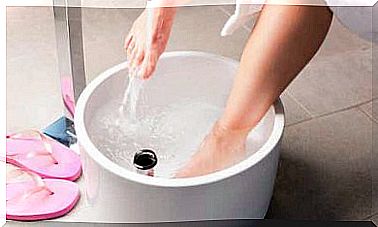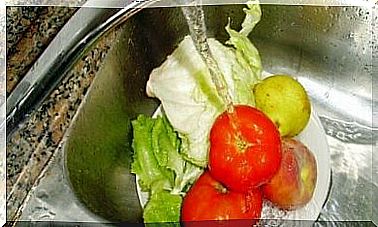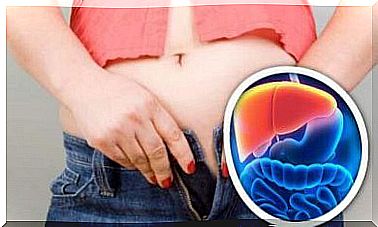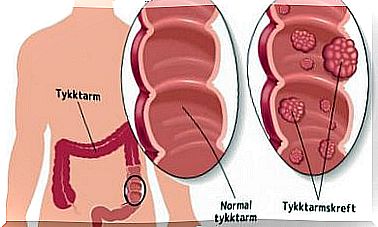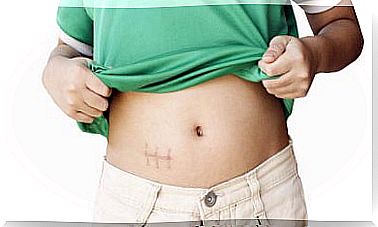Types Of Diaper Rash: Symptoms And Treatment

Diaper rash is the most common skin condition in young infants. There are different types of diaper rash, which is usually a mild, self-limiting condition that requires minimal intervention. In most cases, it occurs on the buttocks and genital area. However, it can also appear on the lower abdomen and upper thighs due to contact with irritants.
According to information published in Pediatric Dermatology , this condition is a result of, among other things, friction, overhydration of the skin and changes in the skin’s pH. In addition, it is more common during the baby’s first year of life. So, what types of diaper rash are there? And what are the symptoms? How can you treat it?
Symptoms of diaper rash
Diaper rash is an inflammatory reaction in the skin around the diaper area. Remember that babies have thinner skin, which gives less secretion and makes them more prone to infection or irritation. Nevertheless, the most important factor for this condition is that the skin is not allowed to breathe due to the diaper.
The symptomatology depends on the severity and time of development. According to information gathered by the Spanish Society for Outpatient Pediatrics and Primary Care, some of the clinical manifestations are as follows:
- Itching of variable intensity
- Subtle redness in mild cases
- Intense inflammation (there may even be bleeding in severe cases)
- Changes in the baby’s mood due to significant irritation in the diaper area
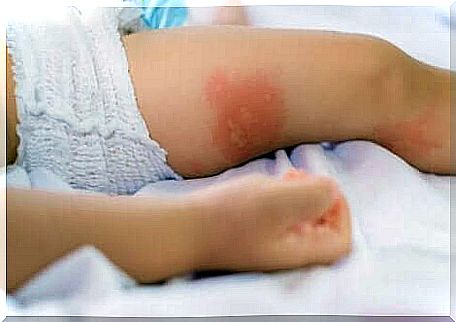
What are the causes?
Diaper rash is the result of a combination of several factors. These include increased humidity, prolonged contact with urine or feces as well as other irritants such as detergents.
The second most common cause of diaper dermatitis is infection. In particular, fungal infections, such as Candida albicans , are the most common infectious cause. Similarly, other mycoses may be associated with diaper dermatitis, such as:
- Infection of dermatophytosis
- Exacerbation of seborrheic dermatitis
- Pseudomycosis conditions such as erythrasma
Types of diaper rash
Diaper rash is any skin condition that occurs in the area that comes in contact with the diaper. In turn, this inflammation can be the result of various factors. In this sense, we can categorize them as follows:
Irritant contact dermatitis
Irritant contact dermatitis is the most common type of diaper rash. The occurrence is related to contact between the skin and feces or urine that accumulates in the diaper. However, the folds in the groin are usually healthy, without changes, because they have less contact with irritants.
To prevent this from happening, studies by AEPED recommend keeping the area clean and dry at all times. Also, you should change your baby’s diaper several times a day.
Candidiasis from the diaper
Diaper rash is a fungal infection that occurs due to the overdevelopment of a type of fungus that usually lives in the digestive microbiota. The characters that characterize it are the following:
- Very red spots
- Shiny, damaged skin
- Clearly defined lesions
- Wound
- Compromised folds in the groin
Bacterial dermatitis
In a few cases, bacterial dermatitis, also known as impetigo, is observed. However, staphylococci and streptococci often cause diaper rash or aggravate an existing case. A characteristic sign of a streptococcal infection is light red skin around the anus.
Allergic dermatitis
Babies with sensitive skin may develop some form of allergic reaction to a specific component of the diapers or creams. The most common allergens include the following:
- Elastic or dyes in the diaper
- Perfumes
- Preservatives in hygiene products
Is it possible to prevent diaper rash?
The treatment of diaper rash has two main goals. First and foremost to heal damaged skin and secondly to prevent rashes. With this in mind, we will now show you some useful strategies for achieving these goals.
- Good hygiene is important to maintain the integrity of the skin and prevent further degradation. You can reduce exposure to irritants such as urine and feces with frequent diaper changes and superabsorbent diapers that help reduce skin overhydration.
- Also make sure to always wash and clean the diaper area with soap-free detergent and water.
- Finally, contrary to popular belief, studies published by Pediatric Dermatology show that baby wipes do not cause skin damage. In addition, the new formulations of this product, which include pH buffers, help balance the alkaline pH level in the urine and prevent skin damage.
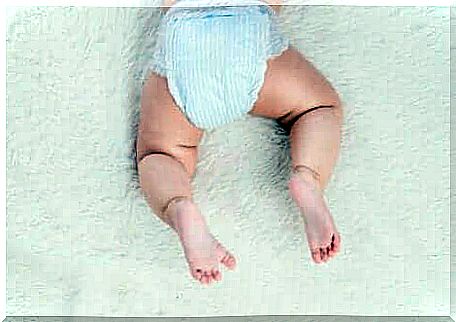
Types of diaper rash: Treatment
Remember that a diagnosis and treatment by a pediatrician or dermatologist is required, regardless of the type of infection in the nappy area the child is suffering from. Once a doctor has found out what type of diaper rash is affecting your baby and its distribution, they will determine the cause and establish therapeutic options.
In case of irritating contact dermatitis, you should practice proper hygiene and leave the baby diaper-free for a few minutes after changing the diaper. Finally, apply a cream based on Lassar’s paste on the area before completing the diaper change.
If you are dealing with a fungal infection, you must use a topical ointment with imidazole.
Note: The use of corticoid creams in the diaper area is completely contraindicated.
Types of diaper rash: When should you see a doctor?
If the baby’s diaper rash does not go away with the above measures, you should consult a doctor so that he or she can prescribe the correct medication. In case of pus formation, ulcer, fever or other clinical manifestation of a complication, you should consult a doctor immediately.
In most cases, this type of dermatological problem is improved with basic care, for example by avoiding the use of irritants and ensuring good hygiene. Nevertheless, it is best to inform the pediatrician about the symptoms.
